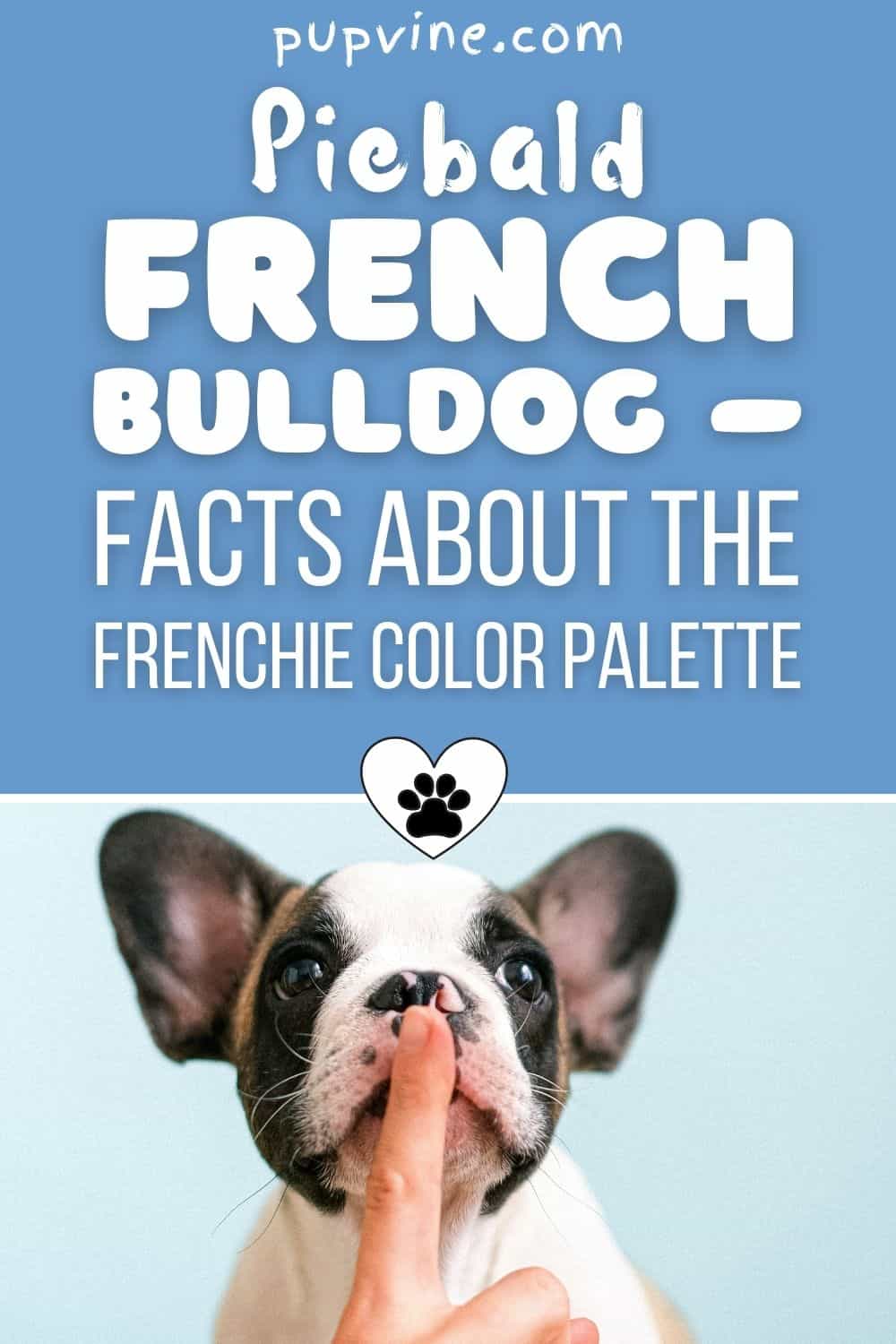While they are considered a controversial breed, French Bulldogs are one of the most popular dog breeds globally.
If you own a Frenchie, chances are you get people asking you questions about his fur color all the time!
These pups come in a huge variety of colors, and it seems like everyone is surprised by the amazing patterns they can have.
But have you heard about piebald French Bulldogs?
You have certainly seen them, but you likely had no idea they were called that.
So, what is a pied French Bulldog? Are there certain important things you need to know before you opt for this pattern? We’ll explain.
Pied French Bulldog
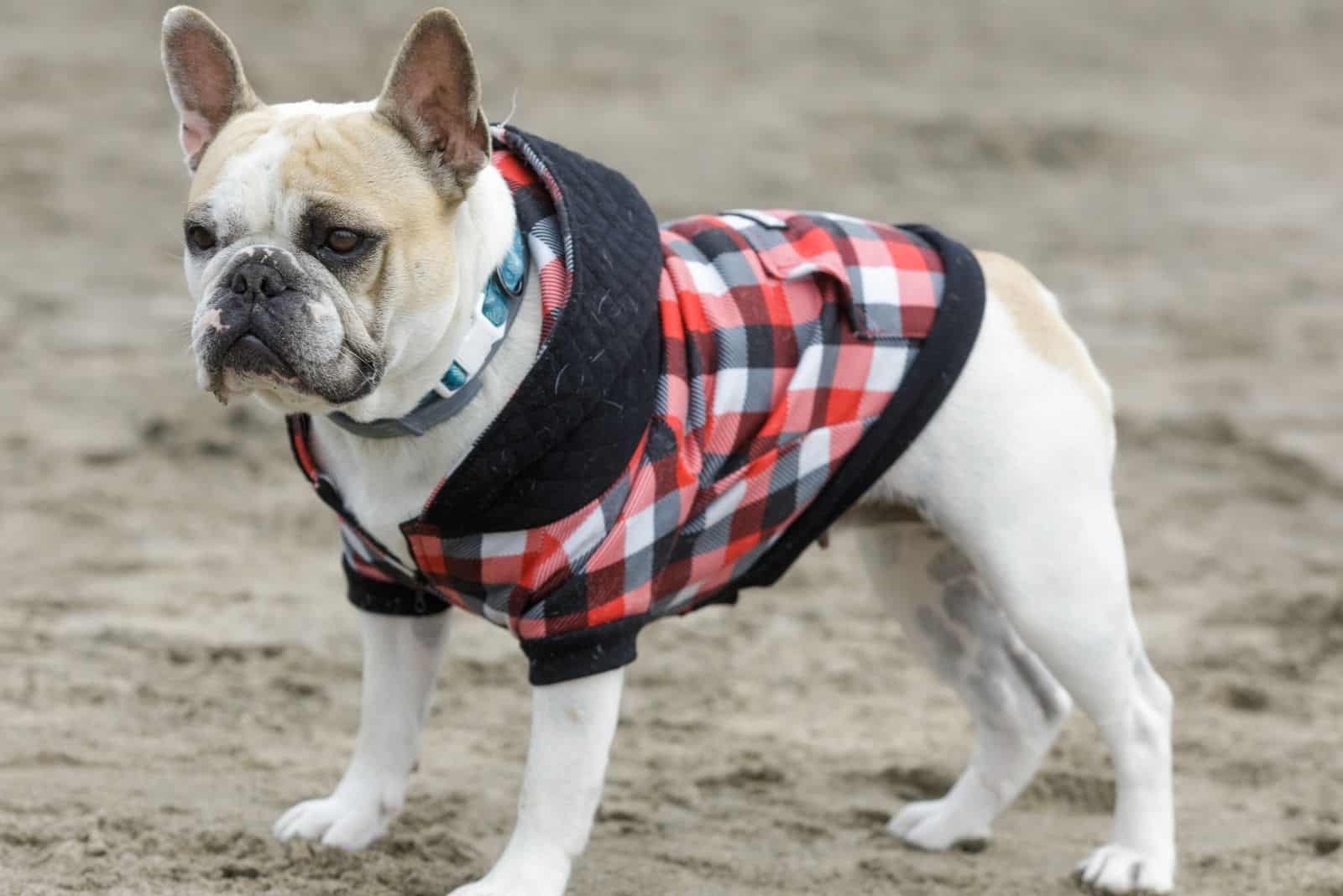
First off, let’s explain what “pied” means.
“Pied” is the term people use to describe a specific pattern found in some dogs, such as Frenchies.
While most people use it interchangeably with the word “piebald,” for a breed such as the French Bulldog, the correct term is “pied.”
So, a pied French Bulldog is a pup whose coat is predominantly white but with clear patches in a darker color covering specific parts of their head, body, or sometimes both.
The pattern distribution and amount of body that’s covered vary from dog to dog.
Despite certain rumors, there is no proof that the dog’s gender affects the pied pattern. Male vs. female, it doesn’t really matter – it’s all up to the individual dog’s genetics.
Still, most French Bulldog breeders try to produce puppies with desirable and distinctive markings because these pups are the more expensive ones.
The most desirable shades of the darker-colored markings in pied Frenchies are fawn and brindle, but the colors can vary.
You can find blue pied French Bulldogs, lilac pied, fawn pied, brindle pied, and so on.
Is Pied A Recognized Pattern?

While rare in some breeds, pied is one of the officially recognized colors and patterns within most Kennel Clubs. However, not all pied colors and variations are up to the breed standards.
Colors that are mentioned as desirable by the AKC include fawn pied and brindle pied; however, many people will refer to brindle pied as simply “pied.”
Although they don’t have any trace of piebald markings, it’s interesting that white Frenchies are still listed in the “pied” category at most dog shows and competitions.
What Should a Pied Frenchie Look Like?

According to the AKC, there are several standards a pied French Bulldog should live up to.
A pied French Bulldog should have more of his coat covered in the white base than in the darker markings.
The borders between the spots of a different color should be clear, without any marks or ticking.
The markings should be attractive-looking and distinctive, which typically means they should be well-pigmented and even in color, symmetrical, as well as nicely distributed over the dog’s body, head, or both.
Achieving this is challenging for breeders, as they can never be sure how the litter will look until all the puppies are born.
Oddly or unevenly placed markings can ruin the pup’s quality, and it makes the difference between a pet and an expensive show dog.
Also, the AKC mentions that coat color isn’t the only thing you should look at. The dog’s lips, rims of the eyes, and eyelashes should be black instead of pink or fair.
Of course, this doesn’t mean that there’s anything wrong with your pup if it isn’t ‘up to standards.’
Any dog with pied markings will still be considered piebald, and there aren’t any health or behavioral consequences.
However, if you have bigger plans for your new puppy and want him to be a show dog, these are the conditions he has to fulfill.
How Do You Breed a Pied Frenchie?
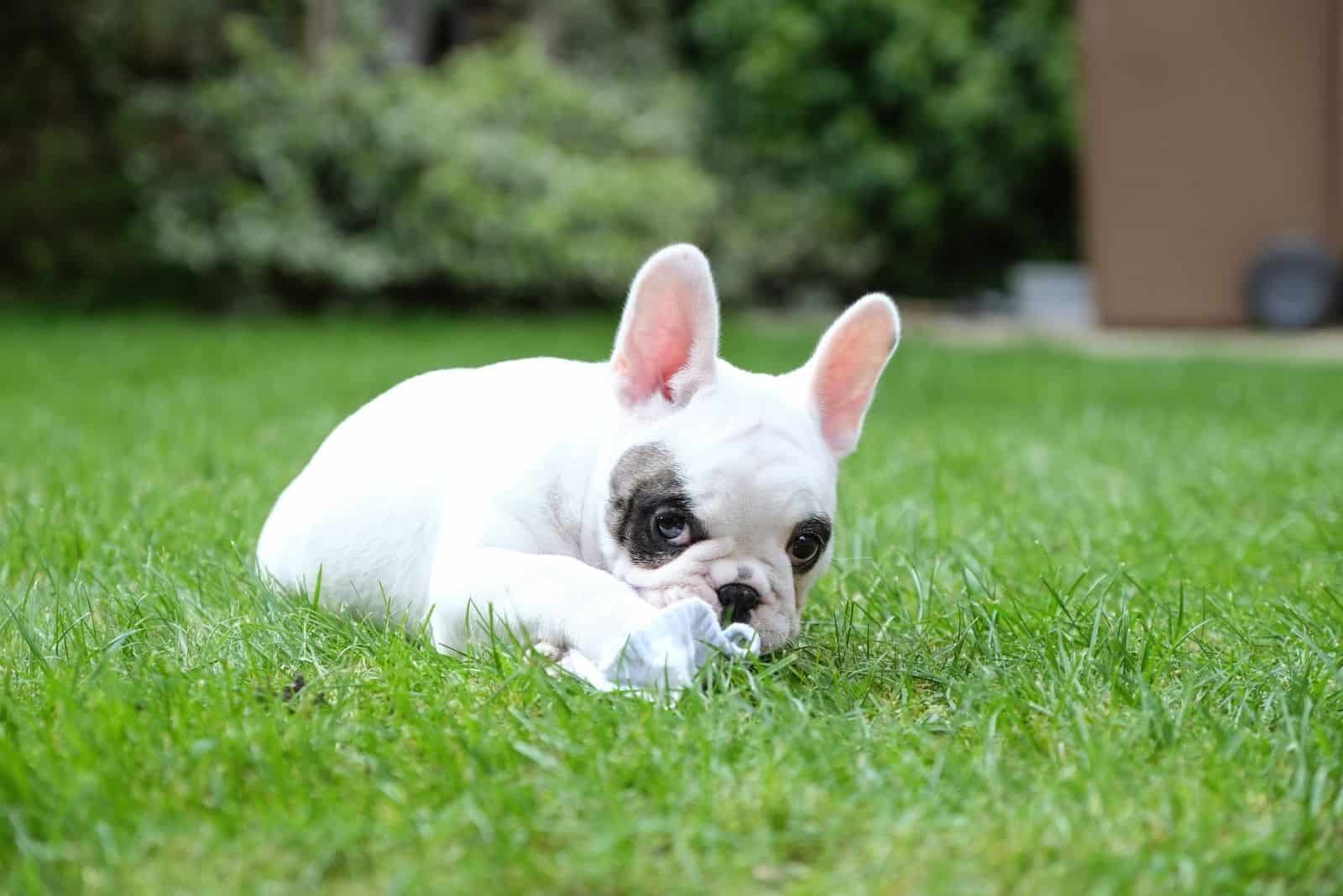
What determines a pied Frenchie is an autosomal recessive heredity. In other words, a pup has to inherit a specific gene combination from both parents to display pied markings.
We’ll explain by using a few examples.
If you breed two pied dogs, you will undoubtedly have a pied litter. While you can’t predict the exact pattern, all dogs will have a piebald coat.
When you breed a pied-colored Frenchie with a solid-colored dog, the non-pied parent must carry a hidden pied gene if you want pied puppies.
You can conduct DNA testing on your dog to determine whether he has the pied gene.
Even if he does, there is only a 50% chance of getting a pied puppy – or, rather, half of the puppies in the litter will be pied. The other half will be a solid color but will carry the pied gene.
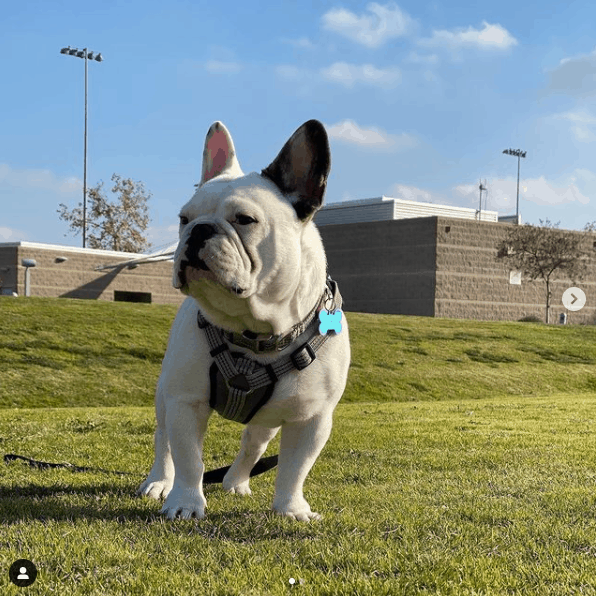
Photo from: @deltoro_bulldogs
Breeding a pied Frenchie with a solid-colored dog that doesn’t carry the pied gene will result in a solid-colored litter, but all the puppies will become pied gene carriers.
If you happen to know that two solid colored dogs carry the pied gene and you breed them, things get a bit tricky.
In this litter, 25% of puppies will be pied, 25% will be a solid color, and 50% will be solid-colored but will carry the hidden pied gene.
As you can see, the breeding process can be challenging, and there are many tests to be conducted before a breeder can be confident they’ll have a pied litter.
Not to mention that the quality of the patterns cannot be predicted in any way!
Other French Bulldog Colors

Frenchies are among one of the dog breeds with the highest diversity of possible colors and patterns.
According to the American Kennel Club (AKC) breed standard, accepted Frenchie colors are white, fawn, cream, brindle, brindle and white, and piebald.
However, they can come in many exotic colors, such as blue, chocolate, merle, lilac, blue fawn, Isabella, sable, and furry; all of which can have tan points.
Suppose you want to take your Frenchie to competitions. In that case, you should be aware that only the standard colors and patterns can participate.
The fun fact is that, up until 1911, only the bridle color was considered standard. Any other pattern would mean immediate disqualification.
Luckily, the regulations have changed, so now there are many different colors when it comes to this dog breed.
If you plan on getting yourself a purebred French Bulldog, you should be prepared to fork out plenty of cash. Most responsible breeders won’t sell French Bulldog puppies for under $2,000.
However, if you’re looking for exotic colored Frenchies, the price is even higher. These pups can cost as much as $6,000!
The Brindle Pattern In French Bulldogs
Brindle is the most common of all French Bulldog coat colors and patterns.
Brindle Frenchies have a fawn base coat with black streaks of hair. This gives them stripes that can resemble a tiger’s fur.
In fact, some brindle French Bulldogs can be as bright in color as true tigers, while others are darker, almost entirely black.
The light version – also known as a reverse brindle – in which fawn hairs predominate is overall much rarer than the darker brindle coloring.
Brindle Frenchies typically have white fur on their stomachs, but the rest of them is entirely in brindle.
Also, the color of the brindle can vary if a dog has some other genes. They can even come in rare colors, so you can find a Frenchie puppy in sable or blue brindle.
Fawn French Bulldog
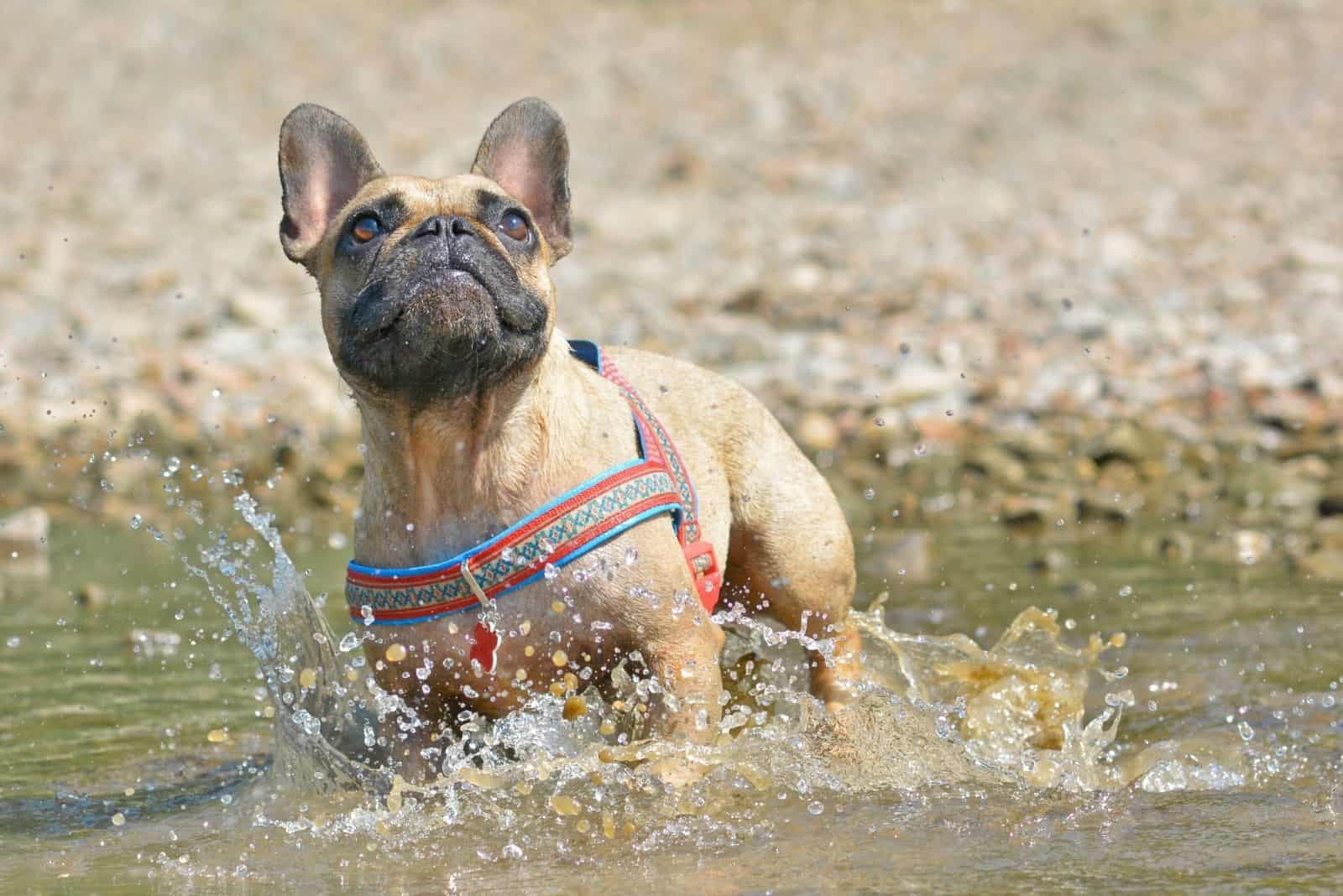
Fawn Frenchies come in many different shades. They can be very light, almost cream-like, but they can also come in deep red hues.
Most have a dark mask on their faces, but this isn’t a necessity. Many fawn Frenchies are maskless, and this is still up to the breed’s standards.
Fawn can also come in plenty of exotic colors, and in most of them, the dilution will affect the black mask, as well as the eyes, nose, and paws.
This means you can find a blue fawn, chocolate fawn, even lilac fawn.
Cream French Bulldog
Often, people mistake light fawn Frenchies for a cream French Bulldog, but there are differences.
In fact, the cream color is a diluted fawn shade, but these pups shouldn’t be considered fawn.
The main one is quite obvious – cream French Bulldogs only have one solid color.
These dogs don’t have any markings, but their skin has a black pigment to it. You can notice it on the pup’s nose, rims of the eyes, paw pads, and lips, all of which are black.
Also, the genetics of a cream French Bulldog is quite different than that of a fawn Frenchie.
Black French Bulldog
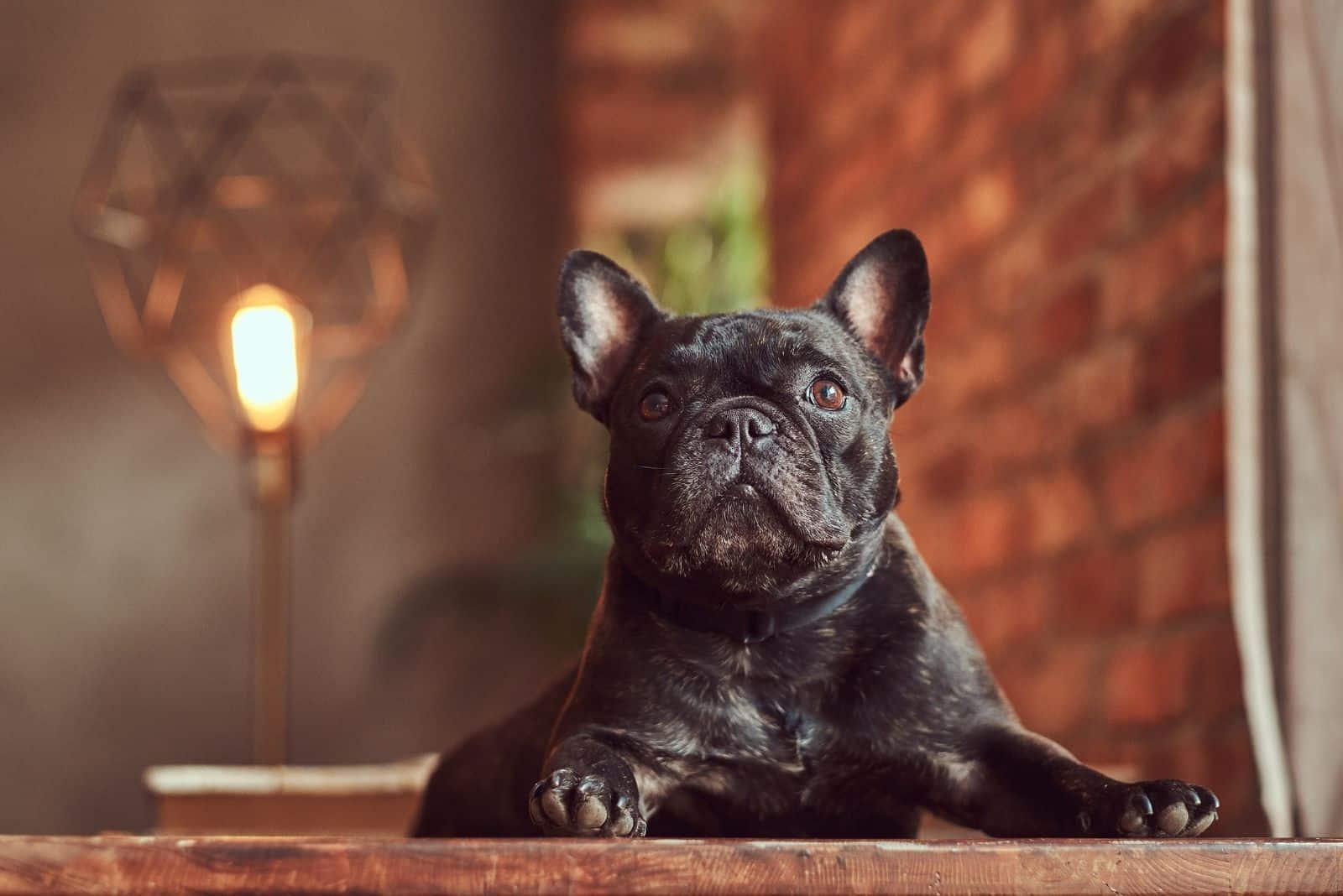
While black Frenchies aren’t standard in this breed, they are still in the lower price range.
Despite this, they are relatively rare because for a dog to be considered solid black, it mustn’t have any sign of brindle.
Many black puppies will grow up to have some brindle or even develop specific markings over time, but it has to have a solid coat to be considered a true black French Bulldog.
Solid black Frenchies have unique DNA, and the color is recessive. Because of this, they are challenging to breed.
Blue French Bulldog
Blue Frenchies are also called ‘gray’ by many. This coat color is created with a dilution gene, which affects black and liver coats. On certain occasions, it can affect the red coat, as well.
If a dog has this dilution gene, a black dog will turn into a blue one. The shade range is wide, so the pup can be anywhere between black and very light gray.
Even if the dog is so dark it appears almost black, you can look at its nose to see if he is, actually, a blue Frenchie. This is because the dilution gene will affect a dog’s skin, as well.
Also, blue Frenchies typically have lighter eyes, while black French Bulldogs have dark eyes.
Keep in mind that this is one of the most expensive Frenchie colors out there.
Lilac French Bulldog

Rare lilac Frenchies are bred in a similar way to blue ones. The same dilution gene that turns a black dog into a blue/grey one will turn a chocolate or liver pup into lilac.
These dogs usually appear more silver than anything else. Rarely, they may look almost entirely white.
Just like with blue Frenchies, their eyes are light in color. Their muzzle and rims of their eyes are also fair, which is how you can differentiate between them and dark-nosed cream Frenchies.
These pups are also very expensive, and some are sold for $7,000! If they come with some rare feature, such as floppy ears, the pricing can go even higher.
Chocolate And Liver French Bulldogs
Unlike with some breeds, the chocolate coat color in Frenchies is, in fact, a diluted black color.
This specific dilution gene is recessive, and if a dog is homozygous, it will be liver-colored. Heterozygous Frenchies will be in a chocolate shade instead.
Merle French Bulldog

Merle is a specific color pattern some dogs can have. The distinct merle gene influences the creation of spots on a solid or piebald dog’s coat. It also affects or rather dilutes, the pigmentation of the skin and eyes.
This is one of the most controversial French Bulldog colors, as this specific allele is known to cause several health issues, especially in the case of a double merle.
Double merle pups will usually look like a white French Bulldog with bright blue eyes.
However, they will often experience blindness, deafness, or even both. Some might even have health problems with their bones and heart.
Because of this, breeders are advised to mate a merle Frenchie with a dog of a solid color.
This will reduce the chance of any genetic issues. Because of this, you should also get your merle Frenchie from a reputable breeder.
Merle dogs usually have a bright blue eye color. Heterochromia is also very common. Merle pups with differently colored eyes are especially sought after.
Since these dogs are relatively rare, they are in the higher price range.
Platinum French Bulldog
Platinum Frenchies are actually a diluted cream color. While their color is typically cream-looking, the dog shows dilution signs on its nose, lips, eyes, and paw pads.
As we’ve mentioned before, a regular cream Frenchie would have a dark nose, eyes, and paw pads. A platinum French Bulldog is quite a bit lighter in those areas.
You might also confuse them with lilac Frenchies, as both sometimes look as if they have a white coat. To see the difference, look at their eyes.
Lilac Frenchies usually have bright blue, light green, or even grey eyes. Platinum ones, on the other hand, have amber-colored eyes.
Isabella French Bulldog
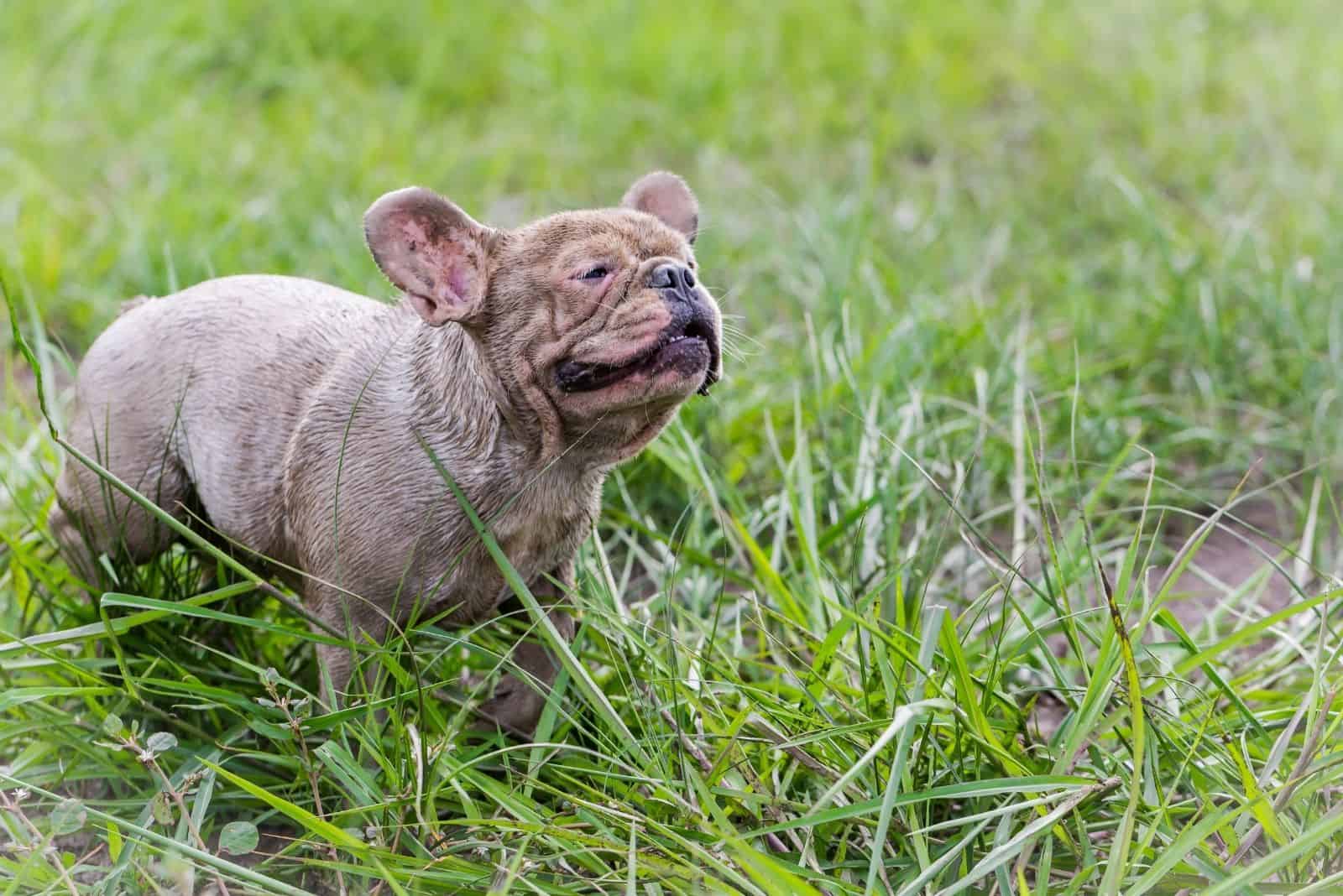
Isabella Frenchies, also known as double lilac Frenchies, are a fairly new color in this breed.
Just like standard lilac French Bulldogs, they are a combination of the blue and chocolate gene, but the chocolate gene is testable, making it a different kind of gene.
While the explanation is a bit complicated, the most important thing to know is that this is the rarest French Bulldog color, as it is the most recent one.
Isabella Frenchies aren’t well-known in the French Bulldog community as they are so unique. They also have an extraordinary price range, and you can find them at prices no cheaper than $15,000!
Furry French Bulldogs
While furry isn’t a color or pattern, it’s still considered one of the possible coat types in Frenchies. Since it’s becoming more and more popular, we have to include it in this list.
Furry Frenchies are also known as fluffy Frenchies. They are French Bulldogs with long hair. This gives them a unique and adorable teddy bear look.
The presence of the L gene creates long hair in Frenchies. While scientists still aren’t sure how this recessive gene came into Frenchie genetics, what everyone is certain of is how cute-looking these pups are.
Furry French Bulldogs are fairly expensive. The price itself also depends on the color, as these dogs can come in all French Bulldog patterns.
There are some health issues with these dogs, so you’ll have to maintain them well. Most notably, they can overheat quickly, so they aren’t recommended for people living in hot and humid areas.
Health Concerns
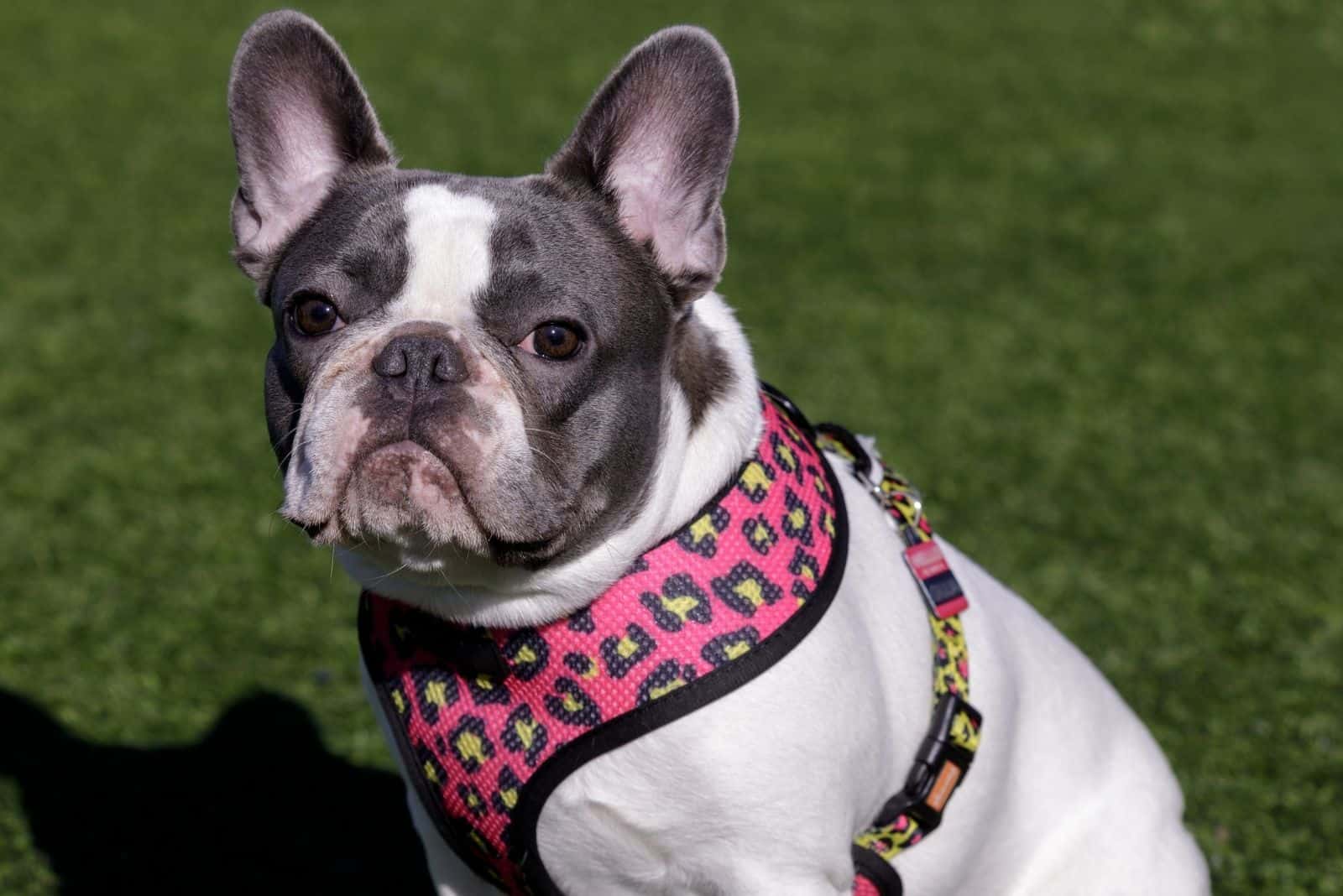
French Bulldogs are one of the dog breeds that can experience color-related deafness, as seen with merle pups.
While the pied coat is deemed safe, there are still some concerns. Many dogs that are primarily white have an increased chance of having pigment-associated hereditary deafness.
Reputable breeders are aware of this risk, which is why they test all puppies before they go to their new home.
If you plan on getting a pied Frenchie puppy, it would be best to ask your breeder whether they tested the dog for deafness.
While this pattern will rarely experience health problems, it’s better to be safe than sorry.
Also, if you notice your adult dog is experiencing issues, take him to your vet, who will do hearing tests.
And don’t worry if your Frenchie has hearing issues. Even deaf dogs can still function normally and without any problems. They don’t experience this the same way humans do. You won’t have any issues with dog training!
Deaf Frenchies can still be excellent pets – although further breeding isn’t recommended. These are friendly dogs that make amazing family pets, no matter the possible health issues.
